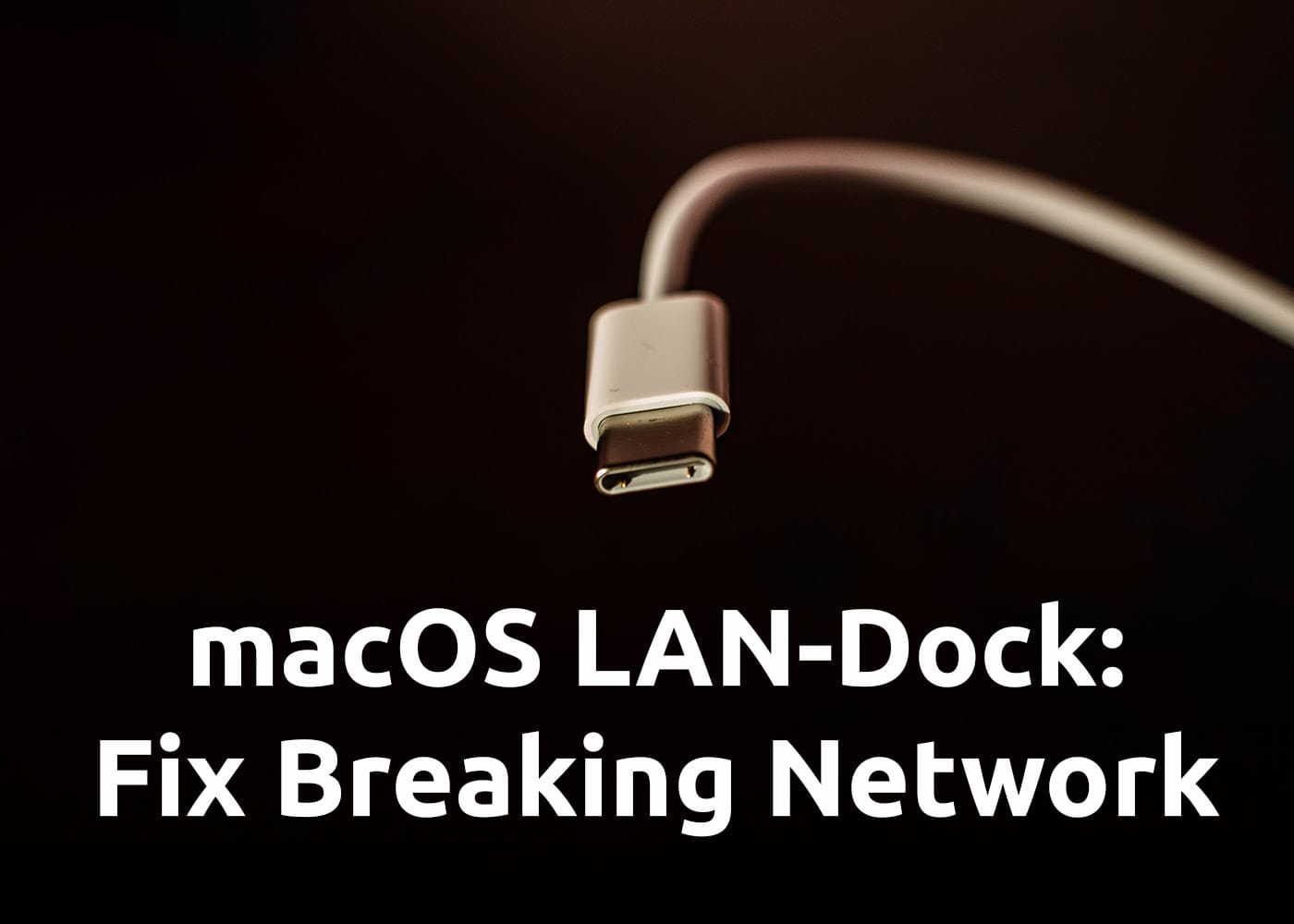Voice and video meetings are becoming more and more ingrained in our everyday lives. If you are using a MacBook with a LAN connection and you get kicked out of such meetings over Zoom, Microsoft Teams, Jitsi, BigBlueButton, Google Meet or whatever tool after a short time, go on and read this post.
TL;DR
Use WiFi / WLAN. If this isn't possible, wait for better hardware support or get another dock or adapter for your LAN connection.
The Problem
To achieve a stable internet connection, a LAN cable is the only solution you can really trust on. When using one of the latest MacBook Pro / MacBook Air running Catalina with (mostly) only USB-C ports, a LAN adapter* is necessary to connect to a wired network. To keep the number of dongles within limits, docking stations are one of the best solutions. I used a cheap USB-C dock for this (in the meantime I have replaced it, but go on).
The docking station made a good job, without any problems, except for video meetings. After some minutes in a video meeting, I get kicked out of it without any error message. Things get even worse: It seems that the full network stack breaks. I can't connect to a website in a browser or made other network things after the error occurs. Even pulling out the LAN cable and putting it back in again doesn't work, switching to a WLAN network either. Only a full restart of the entire system helps. The problem can be reproduced with different tools like Zoom, Microsoft Team, Jitsi, BigBlueButton, Google Meet etc. After 5-30 minutes, the network connection drops.
Solution Finding Process
After googling a lot, I found a big topic in the Apple Community where several users talk about the exact same problem, without any result. So I guess I had to find a solution by myself.
As mentioned earlier, the problem occurs with different tools. Therefore, it isn't a bug of a single software. I thought about a deep problem in my network setup, so I tried it on another network: Same problem. When switching from LAN to WLAN from the beginning (and not after the network drops), everything works fine (first workaround)! So the problem must be related to the LAN connection. I also thought about a problem with the docking station, but never believed in it. To check if the problem is related to the cheap USB-C dock, I bought a USB-C to LAN adapter*. Now, my one-cable solution became a two-cable solution: One cable to the docking station where all the other stuff (webcam, keyboard, mouse, displays ...) is connected and one cable for the new LAN adapter. And yeah, it works! I can now stay in meetings for a long time without network issues.
Solution and Open Questions
Therefore, the problem lies in the LAN port of my docking station. Adding an additional adapter to the setup will solve the problem.
But how can I get back to a one-cable solution? I tried a Thunderbolt 3 dock (more precisely the CalDigit TS3+* because in my opinion, it is the best dock currently on the market). Generally, the Thunderbolt docks are much more expensive than USB-C ones because they are using the latest standards and specifications. But now I don't want to go into detail about the differences between USB-C 3.1 Gen 1, USB-C 3.1 Gen 2, Thunderbolt 3 and so on (if you are interested in it, read this). After testing it I can say that it also solves the problem. Thus, I decided to throw the cheap USB-C dock out of the window and stay with the CalDigit one.
Even if I could solve the problem, I didn't find the exact reason for it. Is it a general problem with different USB-C docks? Does Apple have driver problems with some manufactures? Does Windows have similar problems? And does Thunderbolt docks from other producers also solve the problem?
If you find more details, please let me know!
References
- Header Image Background: Photo by Mishaal Zahed on Unsplash


